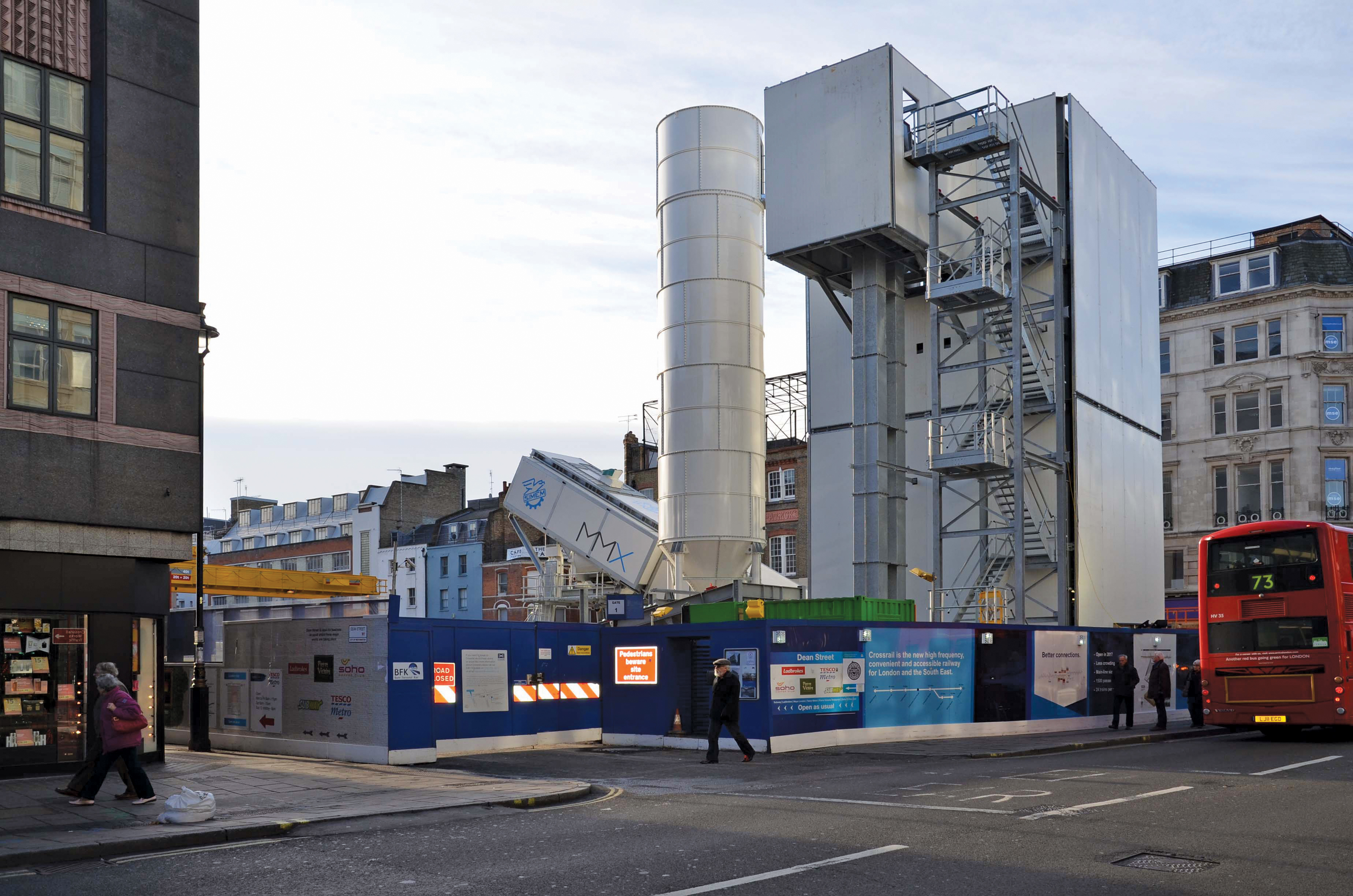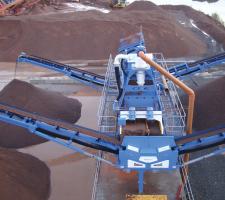
Concrete will be one of the major components of Europe’s largest construction project, Crossrail. As 1,000tonne tunnel boring machines (TBMs) work on excavating the 42km of new Crossrail tunnels (21km of twin-bore) under central London, some 250,000 concrete segments to line them must be produced at two special factories.
The TBMs will bore the tunnelled section of the 118km rail line, linking Maidenhead and Heathrow in the west with Shenfield and Abbey Wood in the east. When completed, Crossrail will bring an extra 1.5 million people within 45 minutes journey of London and reduce cross city journey times.
The total funding envelope available to deliver Crossrail is £14.8 billion (€17.8 billion), and services are due to start through central London in 2018.
It is being delivered by Crossrail Limited (CRL), a wholly-owned subsidiary of Transport for London (TfL), and is jointly sponsored by the Department for Transport and TfL.
The new link will have 37 stations including eight brand new central London stations and 28 upgrades of others, 11 of these major reconstructions.
Italian concrete plant producer
In April 2012 Westminster City Council approved plans for the regeneration of Tottenham Court Road and the east end of Oxford Street, including the former Astoria Theatre site, in what will be Crossrail’s largest over-site development.
The development plans, submitted in conjunction with Derwent London, are for two above ground developments located over each ticket hall of the integrated Tottenham Court Road station that will serve both Crossrail and London Underground passengers.
Included is 500,000ft² (46,450m²) of premium retail, office and residential accommodation, which will also deliver a significant contribution towards the Crossrail funding package. A new theatre is also planned.
Simem says that the challenge to produce high-performance concrete at a rate of 100m³/hour at the site in the London city centre has been successfully achieved with the combination of a supermobile plant, such as the Simem MMX 5000, together with an aggregates storage system consisting of a vertical tower plant with 450m³ volume capacity.
“The footprint space of such a combination is a record in minimising the area dedicated to concrete production, especially when considering the significant output requirements,” says Simem.
“The logistics for transportation and installation of the plant has also been a challenge due to the very limited time schedule and to avoid affecting the city traffic as well as avoiding the construction of concrete works to support the plant.”
The MMX 5000 is designed to be foundation-free and requires only a few days for installation, Simem points out.
It says that despite the compact size of the plant, the MMX 5000 and the nearby aggregates tower offer “the best service space for the operators and perfectly match the strict safety regulations which are adopted in UK for concrete equipment.”
At the end of the project in Oxford Street the whole plant will be transferred to a second job site with just minor modifications to suit the next configuration required.
Another innovative project is at Carriag Gheal Wind Farm, Scotland, where contracting specialist C A Blackwell (Contracts) has shown how careful planning and technical ingenuity on a challenging construction schedule can cope with the demands of an isolated location, harsh terrain and other environmental constraints.
The remote site is 160km north of the city of Glasgow, and in just a few months, County Essex, southern England-based Blackwell created over 45km of roadway through the site, almost 10km of this providing access to the 20 wind turbine sites. The other roads aid the local forestry industry and help remove traffic from the local country lanes. Blackwell also constructed 76,850m³ of hard-standing area.
The company was appointed main contractor by Green Power, a private enterprise firm, after the original winning contractor started work but pulled out.
“We suffered a terrible winter initially. It was pretty disastrous in terms of getting work done,” says David McCracken, project manager for Blackwell on the site.
“It’s already a rough environment, but when you add a lot of wind, rain and snow, and the fact it gets dark very early, means the schedule was looking quite scary.”
The weather improved and road construction started.
Rob King, resource manager for Blackwell, says its fleet of 30tonne B30D articulated dump trucks (ADTs) from South African company
King said that when sections of road had, for example, been made impassable due to nesting birds, it was essential to retain the flexibility of access to parts of the site using untreated cross-country routes, which 4x4 vehicles and normal road-going lorries would largely find it impossible to cope with.
“This is why we were always going to use articulated dump trucks. There was never any other vehicle that was going to move the materials in the conditions we had.”
Blackwell worked with Bell to find a way of turning its ADT into an off-road concrete mixer, something that had been recently developed and successfully trialled on the massive Clyde Wind Farm project, near Abington, South Lanarkshire, Scotland.
Blackwell commissioned a total of five converted Bell trucks, and working with
“We tweaked a few elements here and there, like repositioning radiators, installing new dampers and improving some brackets. We wanted the mixer unit to be completely independent from the existing electronics within the truck, so that we could retain the flexibility to convert it back to a standard haul truck,” says King. This can be done in less than four hours.
Each of the 20 turbines at Carriag Gheal stands in a base of about 330m³ of concrete and about 45tonnes of steel, and because of the volume of concrete, Blackwell built its own batching plant on site using a Rapidbatch 120 from Rapid International of Northern Ireland, the same type as used at Clyde Wind Farm.
When the main thrust of the road infrastructure programme was underway, Blackwell had around 30 Bell ADTs on site, hauling rock and peat on steep and difficult terrain, working alongside dozers and excavators.
The 20 turbine sites are dotted across the central section of the site, 500m apart to avoid ‘wind shadow.’ Each turbine site is initially excavated and a platform of about 7.5-10cm of concrete is prepared to provide a flat working base. A mass of steel rebar is installed to provide the necessary reinforcement before the pour takes place. From start to finish, each turbine base takes on average three weeks.
At the Clyde Wind Farm, which covers an area of 47.5km², Rapid International of Northern Ireland, supplied its new mobile concrete batching plant, the Rapidbatch 120, to Blackwell to carry out production of concrete at the remote Scottish location.
The company is main contractor of the south section of the site which consists of 52 wind turbines and is part of Europe’s largest approved onshore wind farm.
The mobile batching plant, the first of its kind in the UK to be bought by a contractor, allows Blackwell to produce concrete for the turbine bases with each base requiring 360m³ of concrete.
The Rapidbatch 120, which has a compact modular arrangement that can be fully erected within one working day, includes Rapid’s own 3m³ twin-shaft mixer which produces a high quality homogeneous concrete mix. Short mixing times allows for increased production, up to 120m³ of concrete/hour.
At a Scottish quarry, the operators found that the installation of a new modular washing plant increased the efficiency of its concrete manufacturing operation.
The new plant at Kelhead Quarry near Annan, County Dumfries and Galloway, southern Scotland includes the M2500 E4 mobile washing plant and AggMax 83 portable logwasher from
Operational since October 2012 it has a capacity of 200tonnes/hour and is processing 0-75mm limestone conglomerate material to produce a 0-4mm washed manufactured sand as well as 4-6mm grit and three washed aggregates: 6-10mm, 10-20mm and 20-40mm. The 40-75mm material is crushed and fed back to the washing plant.
The efficiency gains are said to have come from eliminating the requirement to buy in washed sand for use in the concrete plant operated by Grange Quarry at Kirkburn, Lockerbie. “Before we bought the CDE plant we were buying in large quantities of washed sand from various sources and we are now able to produce this material ourselves,” says Stuart Dodd, managing director of Grange Quarry Ltd.
“The washing plant has also allowed us to enhance the quality of our concrete aggregates which has not only introduced efficiencies to our production processes but further improved the quality of our concrete products.”
The introduction of the AggMax system enabled Grange Quarry to produce concrete specification aggregates from the limestone conglomerate material at Kelhead Quarry.
The modular M2500 and Aggmax combination is said to allow for quick set up on site and also a small plant footprint.
“The ability for us to get up and running very quickly was crucial in our decision to invest in the new plant” says Stuart Dodd.
“We acquired the rights to extract at Kelhead quarry in June and were producing material by the end of October.”

















